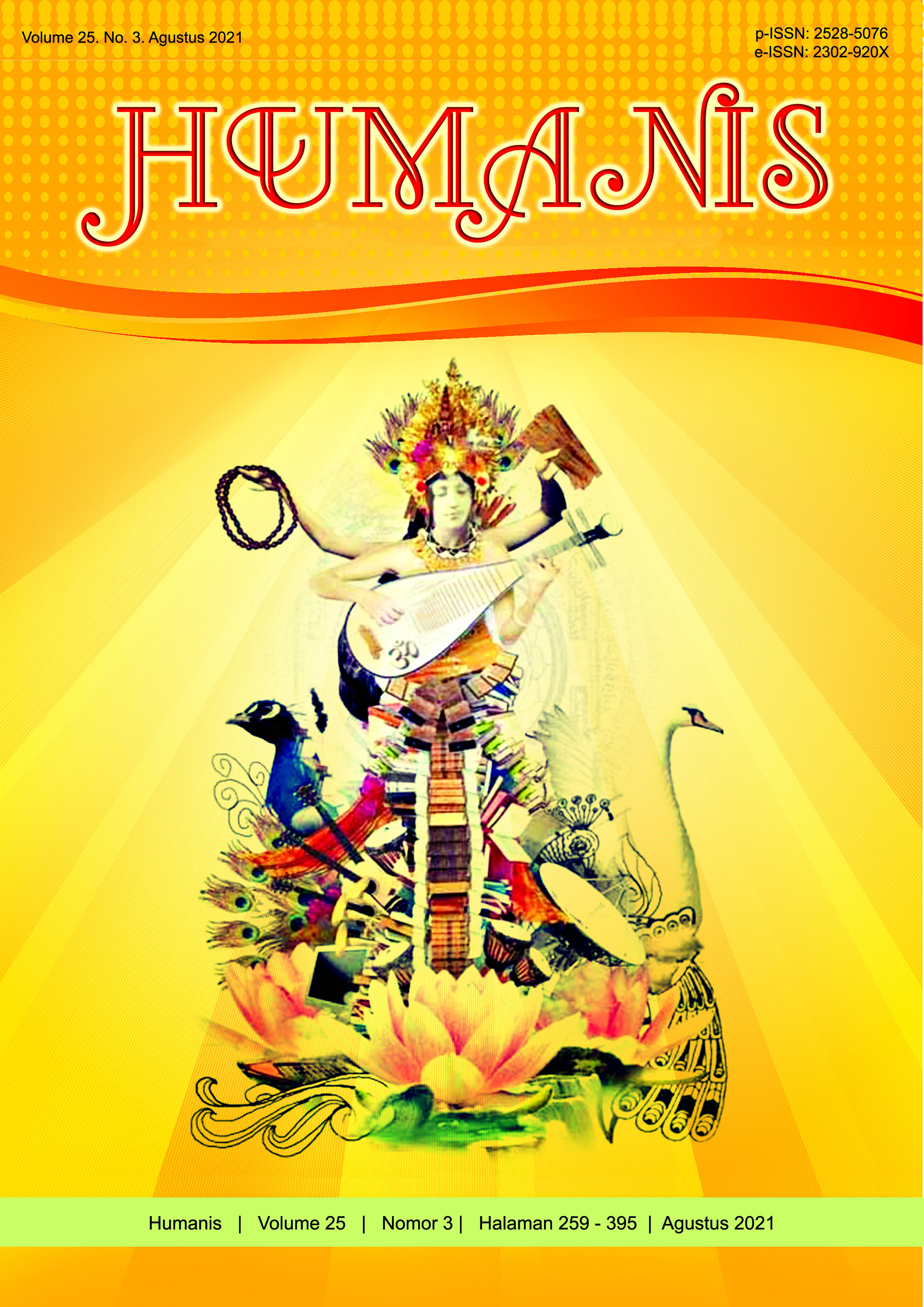Geguritan Ni Sumala: Suatu Kajian Filologis
Abstract
This research is entitled “Geguritan Ni Sumala: Philological Studies”. Assessment of Geguritan Ni Sumala uses philological theory. This study aims to obtain the text of Geguritan Ni Sumala which approaaches the original. The data supply phase uses the observation method and simak method helped by note taking technique. Next, in data analysis phase using comparative descriptive method, transliteration uses standard transliteration method, following by a comparation of three texts through text criticism, text edition using the legger method, the translation uses combination literal translation and idiomatic translation. In the stage of presenting the result of data analysis using formal and informal method by deductive-inductive tecnique also assisted by exposure, tables, and themes. The text edition is complemented by criticism apparatus which is presented separately and translation is also presented separately with the source text. The result of this study are, from the three of GNS manuscripts that have been compared through text criticism there are some copy/write errors from each text such as substitution, adition, omission, lakuna, interpolation, ditography, transposition, and corrupt. By correcting the copy error presented Geguritan Ni Sumala text which assumed to be correct based on the evidence three of contained manuscripts. Geguritan Ni Sumala uses Balinese Kawi language. Next in text edition for literacy guidelines used are Acri and Griffiths opinions (2014: 371-372) and combined with Damais opinions (1995: 125). aside from that, the spelling used in text edition are spelling guidelines for Balinese script pairs with Latin letters and Balinese letters also guidelines Pasang Aksara Bali. Indonesian translations are also included in the Geguritan Ni Sumala text.
Downloads
References
Baried, S. B. (1985). Pengantar Teori Filologi. Jakarta: Pusat Pembinaan dan Pengembangan Bahasa.
Baried, S. B. (1994). Pengantar Teori Filologi. Jakarta: Pusat Yogyakarta: Pusat Pengembangan dan Publikasi Seksi Filologi, Fakultas Sastra Universitas Gadjah Mada.
Damais, L. C. (1995). Epigrafi dan Sejarah Nusantara. Jakarta: Pusat Penelitian Arkeologi Nasional.
Galang Nova, I Putu. (2020). “Analisis Ideologi pada Teks Mitos Baris Cina di Desa Adat Renon”, Humanis. Vol 24, No. 4.
Ikram, Achadiati. (2019). Pengantar Penelitian Filologi. Jakarta: Masyarakat Pernaskahan Nusantara (Manassa).
Larson, M. L. (2005). Penerjemahan Berdasar Makna: Pedoman untuk Pemadanan Antarbahasa. Jakarta: ARCAN.
Nuarca, Ketut. (2017). Geguritan Ni Sumala Satu Kajian Sosiologi Sastra. Denpasar: Universitas Udayana.
Ratna, N. K. (2012). Penelitian Sastra: Teori, Metode, dan Teknik. Yogyakarta: Pustaka Pelajar.
Robson, S. O. (1978). Bahasa dan Sastra: Pengkajian Sastra-Sastra Tradisional Indonesia. Jakarta: Pusat Pembinaan dan Pengembangan Bahasa.
Sardjono, Partini. (1986). Kakawin Gajah Mada Sebuah Karya Sastra Kakawin Abad ke-20: Suntingan Naskah serta Telaah Struktur, Tokoh dan Hubungan Antarteks. Bandung: Binacipta.
Simpen, A. B. Wayan. (2005). Pedoman Pasang Aksara Bali. Denpasar: Dinas Kebudayaan Provinsi Bali.
Sudaryanto, D. P. (2015). Metode dan Teknik Analisis Bahasa. Yogyakarta: Duta Wacana University.
Tinggen, I. N. (1972). Pedoman Ejaan Bahasa Bali dengan Huruf Latin dan Huruf Bali. Singaraja: Lembaga Bahasa Nasional.


















